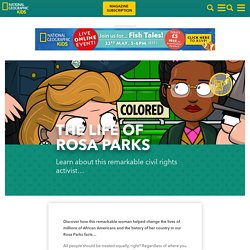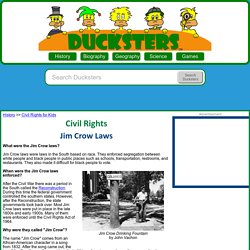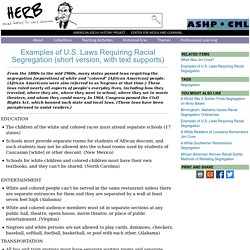

Document de collecte Desvigne Allan 3°B. Malo bande dessinée. Hidden figures Malo ANQUEZ 3eB. Hidden figures doccument de collecte benjamin fontaine 3B. Dossier de collecte jules talvat 3eme .odt. Hidden figures Malo ANQUEZ 3eB. Hidden figures reponses aux questions 6. Dossier de collecte jules talvat 3eme .odt. Hidden figures doccument de collecte benjamin fontaine 3B. Dossier de collecte jules talvat 3eme .odt. Document de collecte jules talvat 3emeB. Sans nom 1 anglais. Sans nom 1 anglais. Sans nom 1 anglais. Hiddeen. Les Figures de lLes Figures de lLes Figures de l'ombre streaming vf.
Rosa Parks Civil Rights Activist Mini Bio BIO version courte. Allan desvigne 3°b martin luther king. YouTube - Broadcast Yourself. Rosa Parks facts for kids. Discover how this remarkable woman helped change the lives of millions of African Americans and the history of her country in our Rosa Parks facts… All people should be treated equally, right?

Regardless of where you come from, what religion you follow, where you work, what language you speak or whether you’re a boy or a girl. Well, sadly, this isn’t always the case, and many groups of people around the world still suffer as a result of prejudices and discrimination. Thankfully, there are some amazing people who have done incredible things to fight for equality. One such person was a civil rights activist called Rosa Parks. Rosa Parks facts Who was Rosa Parks? Full name: Rosa Louise McCauley ParksBorn: 4 February 1913Hometown: Tuskegee, Alabama, USAOccupation: Civil rights activistDied: 24 October 2005Best known for: The Montgomery Bus Boycott Rosa was born in the town of Tuskegee in Alabama, a state in southern USA. Rosa loved to learn and studied hard at high school. Il voulait être écrivain ou professeur. Il est devenu le plus jeune des présidents américains. Son assassinat, il y a 55 ans, a fait de lui une icône de l’histoire des États-Unis. Voici la vie de JFK.…
Ségrégation et discriminations aux États-Unis dans les années 60. La lutte du mouvement des droits civiques, débutée en 1950, pour obtenir dans la loi et dans les faits la fin des inégalités entre Blancs et Noirs américains est longue. La déségrégation est l'un des combats du président John F. Kennedy: au début des années 60 la vie quotidienne de la population noire américaine est faite d'inégalités et de discriminations dans bien des domaines. La lutte et la contestation des mouvements des droits civiques se sont finalement traduites en lois. La ségrégation dans les lieux publics persiste Les Noirs subissent de nombreuses discriminations et exclusions dans les lieux et services publics (trains, bus) en raison des lois ségrégationnistes -lois Jim Crow instaurées en 1876.
Il faut attendre l'adoption de la loi sur les droits civiques (Civils Rights Act), signé par le président Lyndon Johnson le 2 juillet 1964 pour que toute forme de ségrégation soit interdite dans les lieux publics. La discrimination à l'embauche L'accès à l'université. Civil Rights for Kids: Jim Crow Laws. History >> Civil Rights for KidsWhat were the Jim Crow laws?

Jim Crow laws were laws in the South based on race. They enforced segregation between white people and black people in public places such as schools, transportation, restrooms, and restaurants. They also made it difficult for black people to vote. Jim Crow Drinking Fountain by John Vachon. Examples of U.S. Laws Requiring Racial Segregation (short version, with text supports) · HERB: Resources for Teachers. Examples of U.S.

Laws Requiring Racial Segregation (short version, with text supports) From the 1880s to the mid 1960s, many states passed laws requiring the segregation [separation] of white and "colored" [African American] people. (African Americans were also referred to as Negroes at that time.) These laws ruled nearly all aspects of people's everyday lives, including how they traveled, where they ate, where they went to school, where they sat in movie theaters, and whom they could marry. In 1964, Congress passed the Civil Rights Act, which banned such state and local laws. The children of the white and colored races must attend separate schools (17 states)Schools must provide separate rooms for students of African descent, and such students may not be allowed into the school rooms used by students of Caucasian [white] or other descent. All bus and train stations must have separate waiting rooms and separate ticket windows for the white and colored races.